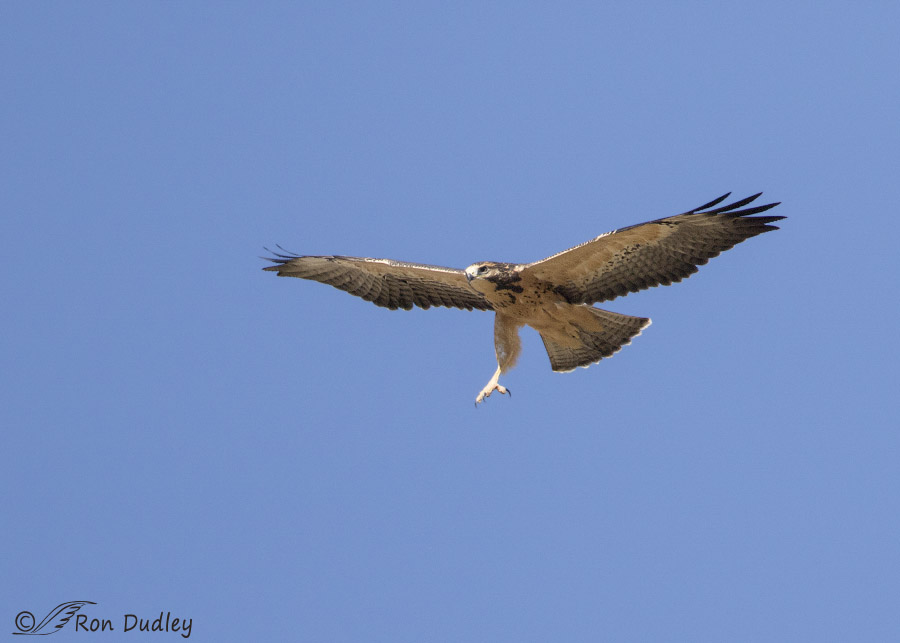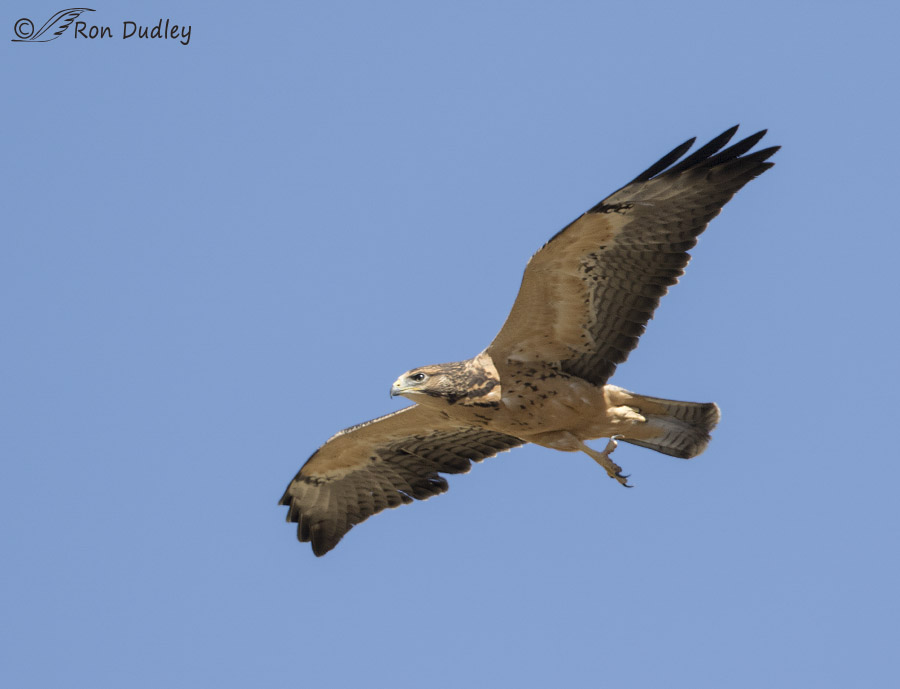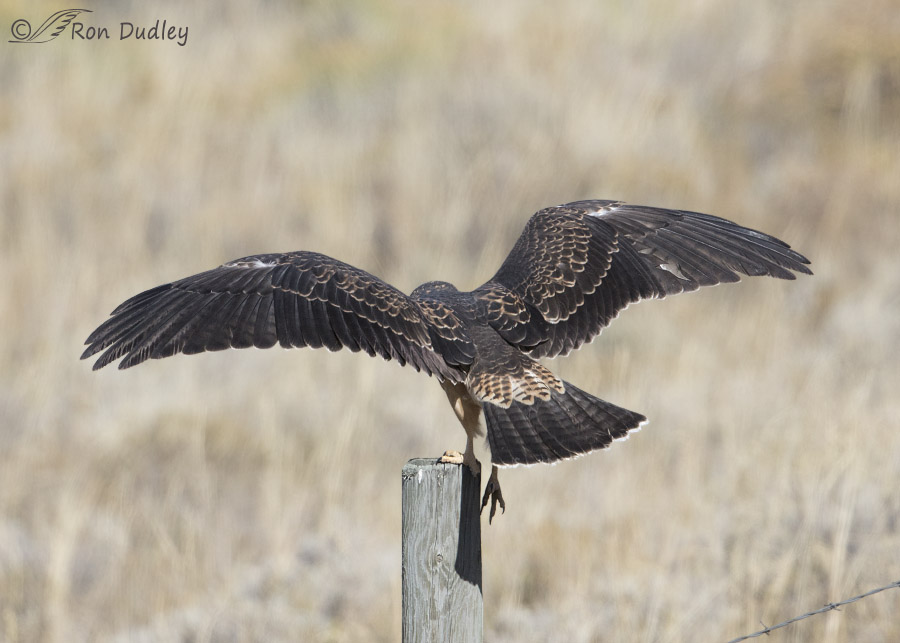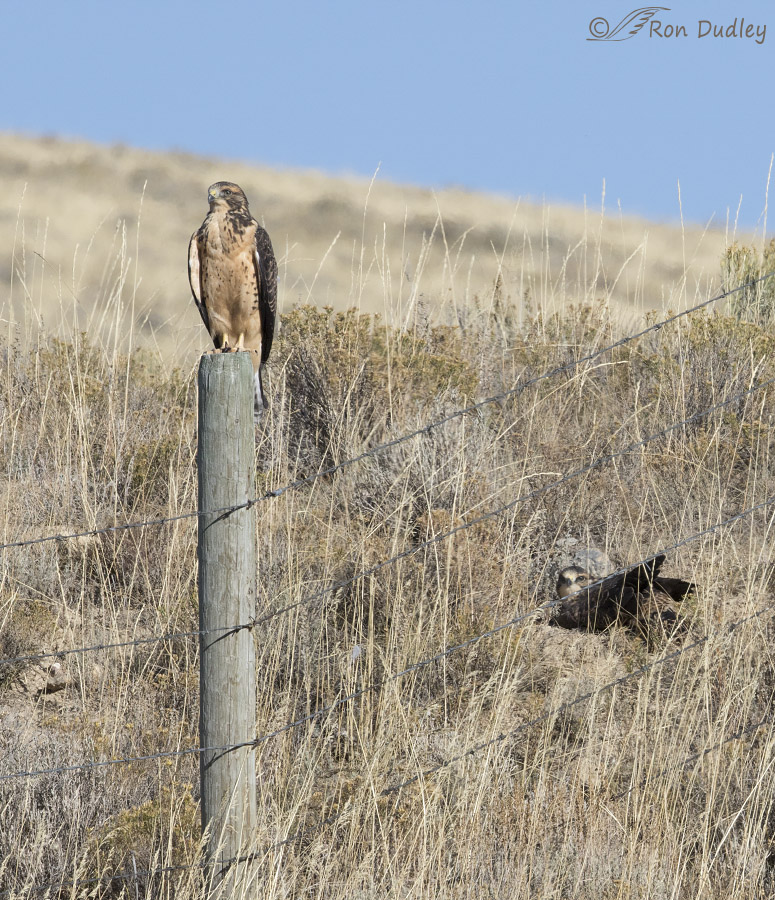Last month near Monida, Montana I photographed a family of Swainson’s Hawks consisting of two adults and two juveniles and in previous posts I’ve mentioned in passing that one of the juveniles was injured. I’ve never posted images of that bird but each time I’ve mentioned the injury there has been considerable interest from my readers so this morning, using photos and narrative, I’ll let you know what I know about that young hawk.

1/3200, f/6.3, ISO 500, Canon 7D Mark II, Canon EF500mm f/4L IS II USM +1.4 tc, not baited, set up or called in
The injury was to the right leg. The bird could fly as well as its healthy sibling but its right leg was always hanging down in flight while the other leg was tucked into a normal flight position. I could never see a physical abnormality in the right leg so I suspect the injury to be higher up where the leg is feathered. Usually that leg would hang almost straight down in flight but occasionally…

1/1250, f/6.3, ISO 500, Canon 7D Mark II, Canon EF500mm f/4L IS II USM +1.4 tc, not baited, set up or called in
it would drag behind at an angle. I also noticed that the foot was usually held in an open position.

1/2500, f/6.3, ISO 500, Canon 7D Mark II, Canon EF500mm f/4L IS II USM +1.4 tc, not baited, set up or called in
Never once did I see the bird put any weight on its right leg. It would stand on one leg on the ground (or on power pole cross beams) for only a short time before laying down. Here it attempted to land on a fence post but it fluttered its wings for several seconds with its injured leg hanging down and then apparently decided that there wasn’t enough room on top of the post to lie down so it flew to the ground nearby.

1/500, f/16, ISO 500, Canon 7D Mark II, Canon EF500mm f/4L IS II USM, not baited, set up or called in
While moving around on the ground it hopped to protect the injured leg but at rest it nearly always laid down (as you see here) while its healthy sibling never did (that I saw). When one of the parents brought in food (voles) the two young birds competed for it and I saw the injured bird get the vole several times.
On one morning when I approached (in my pickup) these birds as they were both on the ground the injured sibling seemed to be struggling a bit more than usual so I grabbed a towel with the intention of capturing it and taking it to the rehab center in Bozeman where the Barn Owl trapped in barbed wire ended up. But as soon as I opened my pickup door the hawk flew off. It could fly very well.
I suppose it’s possible that the injury is one of soft tissue that could potentially heal on its own. I hope so.
Swainson’s Hawks are now in the midst of their epic migration to South America for the winter. I hope this bird is amongst them.
Ron


I feel very lucky to learn from all of you – Ron and all the readers writing in. What a wonderful community of caring, tempered by realism! All the stuff of empowered compassion. Thanks!
The only way to capture an injured but flighted raptor is with a baited trap. Falconers have for centuries used various traps: Swedish goshawk traps, bow nets, mist nets, bal chatri traps. We typically use the last one: it’s a small rounded wire cage with fishing line nooses standing up all over it. The birds don’t really see the wire – definitely don’t see the nooses – they focus on the live mice or chicks or quail inside the trap and come down, feet first. And, one hopes, get toes or a foot caught in the nooses. This is the way most apprentices catch their first red-tailed hawk – they drive by and slip the trap out of the car door and drive a 100′ away or so and watch. This is NOT a trap that can be left unattended, as as trapped bird can hurt themselves. We use this trap also for capturing raptors trapped in warehouses or manufacturing facilities.But a bal chatri is not a likely addition to your camping gear, I’m afraid!
We do get a fair number of birds in with healed fractures; I’m hoping that whatever caused the leg problem for the young SWHA was fairly fresh when you saw him, Ron – and that it eventually healed. Even if he can’t use the leg to hunt (a fracture can heal if the bone ends at least are touching – it just won’t heal in good alignment, tendons can get bound up in the callus that is formed at the fx site, etc.), if it can eventually at least bear weight when standing, he might avoid bumblefoot problems – usually fatal if left untreated – in the good foot. IF he can make it to Argentina, they typically dine almost exclusively on grasshoppers there, so he might not need both feet to catch his meals. But I must confess, I fear his chances are pretty slim.
Thanks, Louise. It’s always good to get your input, especially in situations like this one.
Yes, the bal chatri trap was what Hawkwatch International used to catch the escaped white Gyrfalcon that I posted about a couple of years ago. And I suspect the injury of this bird was “fairly fresh” because it’s a very young bird – it (and its sibling) hadn’t even begun to catch their own food yet – which means that those types of traps would not work even if I had one.
I agree with you about its chances…
Sad, and real. I so hope it heals and/or adjusts successfully.
Me too, EC. Fingers crossed.
Thank you for sharing more about this injured bird with us. It is very difficult to see them injured like that. The only time I’ve spent around injured birds was with a flock of Canada Geese, with two injured youngsters. The one with the eye injuries didn’t make it. The one with its right wing in a permanent position across its back did make it, and encounters with it over a period of several years were some of the most wonderful experiences I’ve ever had with a wild creature. I learned a lot of lessons from that bird. I hope that this Swainson’s juvenile makes it, and that its injury is one that can heal to normal functionality.
“I learned a lot of lessons from that bird”
Birds can teach us a lot, Susan, if we only pay attention…
One of the unfortunate realities of wild bird rehabilitation is that the chances of capturing a flighted bird are slim to none. Then by the time a leg injury makes the bird so debilitated that it can no longer fly, its medical issues have multiplied. The Sandhill Cranes winter in my area. Every year there are reports of a Crane with a broken leg, leading to many unsuccessful wild Crane hunts up and down the valley. Bummer!
“the chances of capturing a flighted bird are slim to none”
That’s been my experience too, Mikal. A few years ago we reported a merganser at a local pond entangled in fishing line and with a hook in its mouth. The local rehabbers (and DNR) tried to catch it but couldn’t.
Is therecsome kind of “gun” that shoots put a net?
Patty, There are net guns like that but in my experience most rehabbers don’t have access to them – perhaps because of issues related to expense or training…
Like Debbie, I’ve wondered, and worried, if the injured bird could capture enough food with only one working talon, ad if could find safe places to perch…I’m afraid it has some huge challenges ahead….
“I’m afraid it has some huge challenges ahead”
It sure does, Patty – unless the leg’s been able to heal on its own.
Thx, Ron. It sure have a hard way to go ahead of it tho it certainly appears to be a “survivor”. The pictures are great!
Thank you, Judy.
I have thought of that hawk a lot. Birds are very lucky to have you photograph them. You not only make them famous, you also try and help the injured ones. Thank you for that. I wonder if he is able to catch his own food with one set of claws. I hate to see him try to migrate and not get very far. Is there an owner to the property that could call and get him help? Thank you Ron for sharing this story and for caring about animals.
Thanks, Debbie. Sadly I don’t think there’s any practical way to help this bird while it can still fly. And I’m pretty sure it would have left by now on its migration.